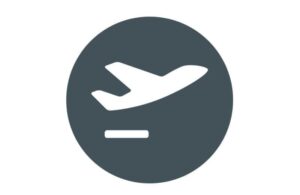“These pilots show that face scans can enable a seamless biometric exit system of the kind the law has required for more than a decade.”- Tovah LaDier, Managing Director, IBIA

Hot on the heels of the Georgetown University Center on Privacy & Technology’s recent assessment that Biometric Exit isn’t an accurate or effective technology to address national security and immigration challenges for travel in the US, the International Biometrics + Identity Association (IBIA) published a white paper with the concise title, Setting the Record Straight on Face Scans in Biometric Exit.
IBIA reports that in the pilots of the technology, which began in 2017, passengers departing on international flights would have their photos taken along with their boarding passes and the photo was then automatically compared to the photograph on file from their passport or other travel documentation to confirm identity. The white paper insists the accuracy rate was far higher than visual inspections or name comparisons.
Amid debate between facial recognition proponents and civil rights advocates who oppose it, IBIA stands firmly on the position Biometric Exit is a highly efficient technology. “Face scans give travelers at U.S. airports what they want: Tight security without adding friction and wait-time to the boarding process,” said IBIA Managing Director Tovah LaDier, “These pilots show that face scans can enable a seamless biometric exit system of the kind the law has required for more than a decade.”
The program is backed by a congressional mandate and IBIA insists the $1 billion dollar price tag won’t come out of the taxpayers pocket, but funds will be accumulated from increases in fees paid by visa applications.
January 24, 2018 – Susan Stover








Follow Us